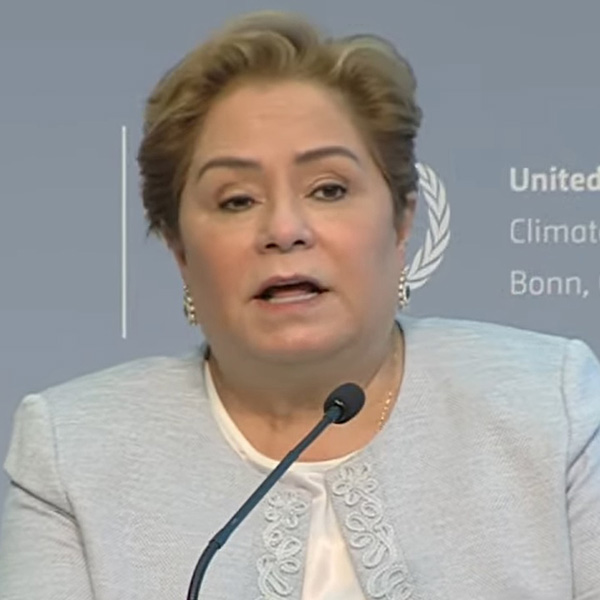
Parties to the United Nations Framework Convention on Climate Change began their annual subsidiary bodies conference in Bonn, Germany, Monday to prepare for the 27th Conference of the Parties (COP27) in Egypt this fall.
 UN Climate Change Executive Secretary Patricia Espinosa | United Nations
UN Climate Change Executive Secretary Patricia Espinosa | United Nations“These are meetings where we can already start seeing the best way to address some of the contentious issues that will be coming up,” UN Climate Change Executive Secretary Patricia Espinosa said. The meeting has “special meaning” in the context of a world that is “nothing like what we saw [at COP26] in Glasgow … and is being impacted by significant progress on climate change, including the disruption of global energy markets and clean energy investments,” she said during an opening day press conference.
UNFCC subsidiary bodies, in charge of implementation and scientific and technological advice, will hold meetings through June 16, focusing on advancing the issues that will be before the full conference in Sharm El-Sheikh, Egypt. Top among the bodies’ concerns will be mitigation, adaptation, finance, and loss and damage.
The Bonn conference is the first time parties have met since COP26, where they agreed on the operational details of the 2015 Paris Agreement and the work necessary to mitigate, adapt to and compensate for climate change.
“This conference marks the start of a new phase in our intergovernmental climate change process; a phase of implementation,” Espinosa said. “We have a blueprint, and we have the rules to ensure that it is transpiring, so it’s time to get on with the job.”
Mitigation
Mitigating greenhouse gas emissions through national climate action plans is a cornerstone of the Paris Agreement, but Espinosa said parties in Glasgow agreed that the existing five-year cycle for updating those plans is not sufficient.
Parties need to make climate plan reviews a “permanent process” so they can watch for opportunities to reduce emissions and further the agreement’s goal of keeping global temperature rise below 1.5 degrees Celsius, she said.
“So far, we have received only a few updated [plans], and we need to get more,” she said.
The UNFCCC Secretariat is helping support more national plan updates by encouraging parties to report progress on implementation or potential future mitigation opportunities without walking through the entire plan development process, according to Espinosa.
Regular updates, she added, will help the Secretariat develop “the most credible picture” on mitigation and long-term climate strategies from countries.
“This is a big area where we know the world will be watching and will want to know exactly where we are,” she said.
During the Bonn conference, parties will also discuss preparations for the regular global stocktake required by the Paris Agreement to assess the collective progress on achieving the goals of the agreement.
“The technical dialogue [in Bonn] will allow parties to start identifying where the existing gaps are and hopefully how to address them,” Espinosa said.
Adaptation and Loss
Adapting to climate change was a main concern raised by vulnerable, developing countries during COP26, and Espinosa said that those countries were “eager” to see the issue on the Bonn conference agenda.
In Glasgow, “there was a decision to start the process of defining a new global goal on adaptation, and we start that conversation here in Bonn,” she said.
Espinosa also hopes parties will make progress in Bonn on developing the Santiago Network for countries that need advice on issues related to loss and damage from climate change. Last year, the parties outlined the functions of the network, which was formalized originally in 2019.
The network, Espinosa said, “needs to become fully operational.”
She also wants to see the parties advance a dialogue on how to finance loss and damage that started in Glasgow.
Retiring
Espinosa officially announced her retirement from the role of Executive Secretary during her opening speech at the conference.
“My time serving the process from the Secretariat is at an end, but this process will go on, and I will do all I can to contribute, as a private citizen, to improving our understanding, galvanizing action and, ultimately, improve our chances of success on climate,” she said.
Espinosa took over the role in 2016, having served previously as the Mexican Minister of Foreign Affairs and the President of COP16 in 2010.
Reflecting on her six-year tenure, Espinosa said: “If we all do what we can and we work together, we can get through any challenge. The key is to support each other.”


